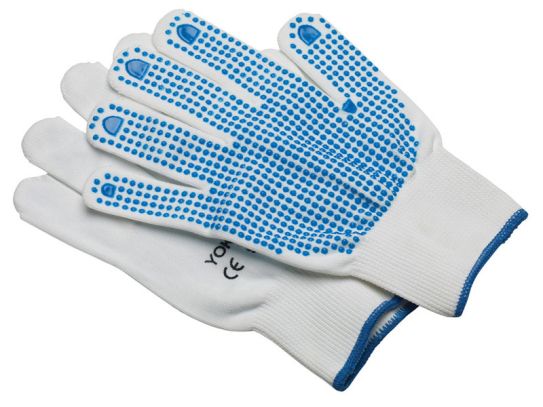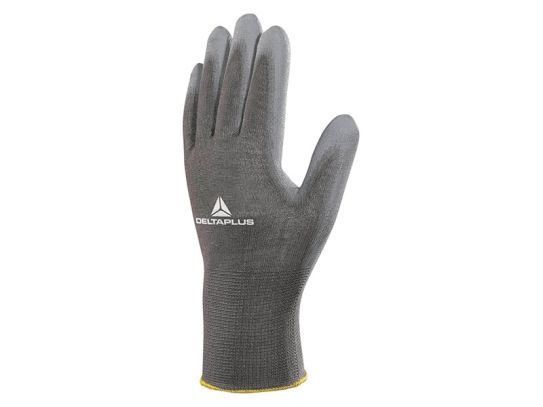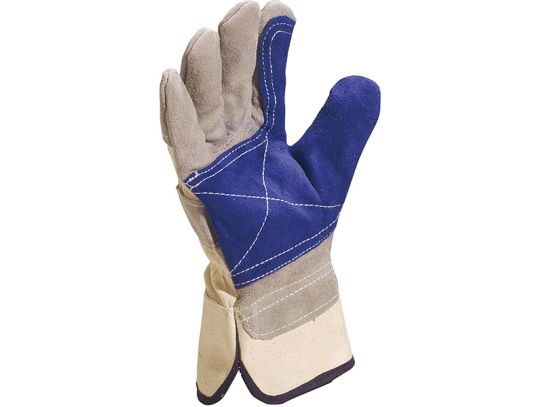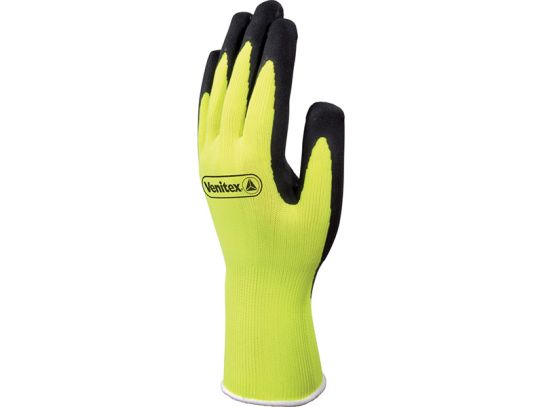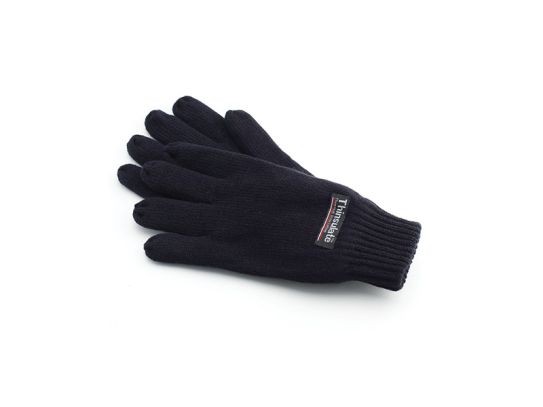Safety Gloves
Looking for reliable hand protection? Look no further than our range of safety gloves. Made from high-quality materials designed to withstand tough conditions, our gloves provide the ultimate protection for your hands. With options for men and women, in a range of colours and styles, you're sure to find the perfect pair to match your needs.
Performance and Protection, Hand in Hand
Introducing the ultimate hand protection for the hardworking professional: our range of safety gloves. Designed for the toughest jobs, these gloves will keep your hands safe and comfortable, no matter the task at hand.
Our Grip Gloves feature a textured surface for maximum grip and dexterity, perfect for handling tools and equipment with precision. The Docker Gloves are tough enough to handle heavy loads, but still flexible enough for fine work. Our Thinsulate Gloves are perfect for those who work in cold environments, to keep your hands warm even in the harshest conditions.
Don’t sacrifice comfort for protection, our gloves are built to last and won’t tear, fray or feel uncomfortable on your hands. Protect your hands and get the job done with our range of safety gloves. Whether you’re working in the garden or on a construction site, these gloves have got you covered. Trust us to keep your hands protected, so you can focus on the task at hand.
What Are Safety Gloves?
Safety gloves are specialised gloves designed to protect the hands from hazards in the workplace or other situations where hand protection is needed. These gloves can be made from a variety of materials such as leather, cloth, rubber, and synthetic materials, and they can be designed to protect against specific hazards such as cuts, punctures, heat, chemicals, and electrical hazards. Safety gloves are used in many different industries, including construction, manufacturing, transportation, and healthcare. They are also commonly used by mechanics, electricians, and other tradespeople, as well as in emergency and first responder roles.
There are many different types of safety gloves available, each with its own unique features and benefits. Some gloves are designed to provide general protection, while others are more specialised and intended to protect against specific hazards. For example, cut-resistant gloves are made with materials that are resistant to cuts and punctures, and are often used in food processing and meat packing, while heat-resistant gloves protect against extreme heat or fire and are used in welding or other hot works.
The appropriate type of safety gloves for a given situation will depend on the nature of the work being done and the hazards present. In general, it is important to select gloves that are appropriate for the specific tasks and hazards present in a given workplace, and that provide the right balance of protection, durability, and comfort.
What Are Some Common Uses for Safety Gloves?
Safety gloves are used in a wide variety of industries and workplaces to protect the hands from hazards. Some common uses for safety gloves include:
- Construction and manufacturing: Safety gloves are commonly used in construction and manufacturing to protect against cuts, punctures, and other injuries. They are also used to protect against electrical hazards and heat.
- Transportation: In the transportation industry, safety gloves are used to protect against cuts and punctures when handling cargo, as well as to protect against cold temperatures in refrigerated trucks.
- Healthcare: In the healthcare industry, safety gloves are used to protect against infectious diseases and other hazards. They are also used to protect against the chemical hazards associated with cleaning and disinfecting medical equipment.
- Mechanic and tradespeople: Tradespeople such as mechanics and electricians use gloves to protect their hands from cuts, punctures, and electrical hazards.
- Food service and handling: Gloves are also important in the food industry to protect food from being contaminated by hands and to protect employees hands from cuts and punctures while handling knives and other sharp tools.
- Emergency responders: Safety gloves are also used by emergency responders such as firefighters and paramedics to protect against cuts, punctures, heat, and other hazards.
- Laboratory and scientific research: Workers in laboratory and scientific research settings often use safety gloves to protect against chemical hazards, as well as to prevent contamination of samples and equipment.
It is important to remember that the appropriate type of safety gloves for a given situation will depend on the nature of the work being done and the hazards present, as well as the specific gloves features for different types of hazards. Employers are responsible for providing their employees with appropriate PPE and making sure the workers are trained on how to use and maintain it.
What Are the Different Types of Safety Gloves?
There are many different types of safety gloves available, each with its own unique features and benefits. Some common types of safety gloves include:
- Cut-resistant gloves: These gloves are made with materials that are resistant to cuts and punctures, and are often used in food processing and meat packing, as well as other applications where sharp tools and equipment are used.
- Heat-resistant gloves: These gloves protect against extreme heat or fire and are used in welding or other hot works. They are made from materials like aramid fibres, aluminised materials, or ceramic that can withstand high temperatures.
- Chemical-resistant gloves: These gloves are designed to protect against chemicals and other hazardous materials. They are made from materials such as neoprene, nitrile rubber, and PVC, which provide a barrier to protect the hands.
- Electrical insulation gloves: These gloves are used to protect against electrical hazards and are made with materials such as rubber or synthetic materials that provide insulation against electricity.
- Impact-resistant gloves: These gloves are designed to protect against impacts and are commonly used in construction and manufacturing. They are made with materials such as foam, plastic, or steel to help absorb impact and protect the hands.
- Cold-resistant gloves: These gloves are designed to protect against cold temperatures and are commonly used in refrigerated trucks and other cold environments. They are made with materials such as Thinsulate, fleece or other thermal materials.
- Disposable gloves: These gloves are used for single-use and are commonly used in medical and food handling situations where hygiene is critical. They are made with materials such as latex, nitrile, or polyethylene.
- General purpose gloves: These gloves are made for general hand protection and can be made from a variety of materials depending on the application like cotton, nylon, or synthetic leather.
It's important to note that many gloves can be a combination of the above types, having characteristics of multiple types and they can be suitable for multiple applications where multiple hazards are present. Employers and workers should choose the appropriate type of gloves for the specific hazards present in their workplace, and ensure that the gloves fit well and provide the necessary protection.
How Do I Choose the Right Type of Safety Gloves for My Job?
Choosing the right type of safety gloves for your job is important to ensure that your hands are protected from hazards and that you can perform your job safely and effectively. Here are some steps you can take to choose the right type of safety gloves for your job:
- Assess the hazards present in your workplace: Identify the specific hazards that your hands are exposed to in your workplace, such as cuts, punctures, heat, chemicals, and electrical hazards.
- Research different types of safety gloves: Once you have identified the hazards present in your workplace, research different types of safety gloves that are designed to protect against those specific hazards.
- Consider the fit and comfort: Safety gloves should fit snugly but not be too tight. They should allow for a full range of motion and not interfere with dexterity. gloves that are too tight can restrict blood flow and cause hand fatigue, while gloves that are too loose can allow hazards to penetrate.
- Look for gloves that are durable and easy to maintain: Consider gloves that are made from durable materials and are easy to clean and maintain. This will ensure that the gloves provide long-lasting protection and that they can be used for multiple shifts or tasks.
Are There Different Sizes of Safety Gloves?
Yes, safety gloves come in a variety of sizes to fit different hand sizes. It is important to choose a size that fits your hands well, as this will ensure that the gloves provide the necessary protection and comfort.
Manufacturers generally offer gloves in several sizes, such as small, medium, large, and extra-large, as well as in between sizes like medium-large and extra-small to ensure that the gloves are tailored to the needs of different individuals. It is important to try on the gloves to ensure that they fit properly and that they allow for a full range of motion and dexterity.
Some manufacturers also offer gloves with adjustable features, such as adjustable cuffs or Velcro closures that allow for a more customised fit. Some gloves are also available in multiple colours so you can pick the one you prefer.
It is also important to note that some gloves may have a specific size chart for the best fit and you should check that chart before purchasing, different brands may have different size charts. It's also recommended to have a try-on session before committing to a bulk purchase.
Are There Any UK or European Industry Standards or Regulations That Apply to Safety Gloves?
Yes, there are several UK and European industry standards and regulations that apply to safety gloves. These standards are in place to ensure that safety gloves provide the necessary protection for workers and meet certain performance criteria.
- In the UK, the Personal Protective Equipment at Work Regulations 1992 (PPE) outline the general requirements for personal protective equipment (PPE), including safety gloves. The regulations state that PPE must be appropriate for the specific risks present in the workplace and must be CE marked to indicate that it meets European safety standards.
- In Europe, the main standard for safety gloves is EN 420:2003+A1:2009, which establishes general requirements for gloves, including their design, construction, performance and testing criteria.
Additionally, there are specific standards for certain types of gloves such as:
- EN 388:2016 for mechanical hazards such as cut, abrasion, puncture, and tear resistance.
- EN 407:2004+A1:2010 for gloves used in hot works and heat resistance.
- EN 374-3:2003 for gloves used in chemical protection.
- EN 407:2004+A1:2010 for gloves used in cold environments and thermal protection.
These standards provide a benchmark for the design and performance of safety gloves and are intended to ensure that gloves provide the necessary protection for workers in different industries. Employers have the responsibility to ensure that the PPE they provide to their workers comply with regulations and standards, and that workers are trained on how to use and maintain them.
